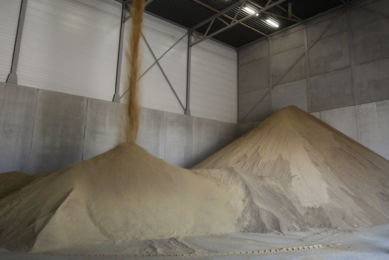Podcast: Milk by-products

This 73rd episode of the Real P3 podcast is the first part of a 3-part special on by-products. Dr Casey Bradley speaks about milk products, milk replacers and nursery feed diets with swine nutritionists Philip van den Brink in the Netherlands and Casey van der Bergh in South Africa.
Brink was born on a dairy and swine farm in the Netherlands. He has gained a lot of pig nutrition experience and knowledge from many years visiting numerous farms around the world. Bergh began her career in the industry in premix side of pig nutrition. She now works for a piglet nutrition company, P3NC, and focuses specifically on piglet nutrition.
Formulating for nutrients and a focus on feed intake
Colostrum is critical to get the piglet off to a good start, says Brink. However, with so many piglets born per litter, the sow can really use some support. Nutrient intake is important, to start as young as possible. Milk products is the only product that a piglet can digest in the first week or 10 days, and hence we can look to milk replacers. After 10 days of age the transition period comes where the focus turns to digestive enzymes.
Brink believes in a nutrient approach rather than a raw material approach. He also highlights that feed intake is one of the most important factors, adding that there are ways to increase a piglet’s feed intake.
“A good nutritionist is not developing a feed but a feed programme, based on diets and the connection between those diets from a milk replacer to a creep feed.”
Lactose as a focus, and a search for alternatives
Lactose is an important ingredient, says Bergh. With the price of various proteins increasing by 50% and some products being unavailable, it is important to formulate on the nutrient of lactose equivalent, which research shows has the same benefit of pure lactose. Bergh speaks about the ideal lactose for a creep feed through the nursery, and how to transition those levels. She also talks more about lactose equivalents and types of ingredients used.
The conversation moves to mixability, some dangers or pitfalls with milk products, and milk products in liquid feeding systems.











